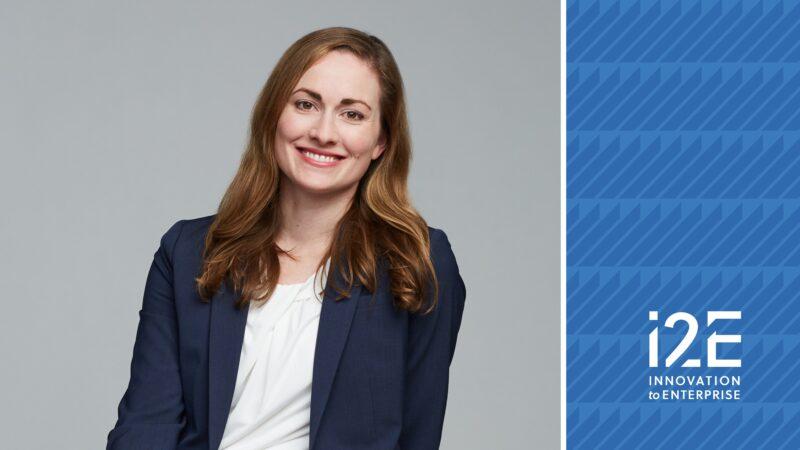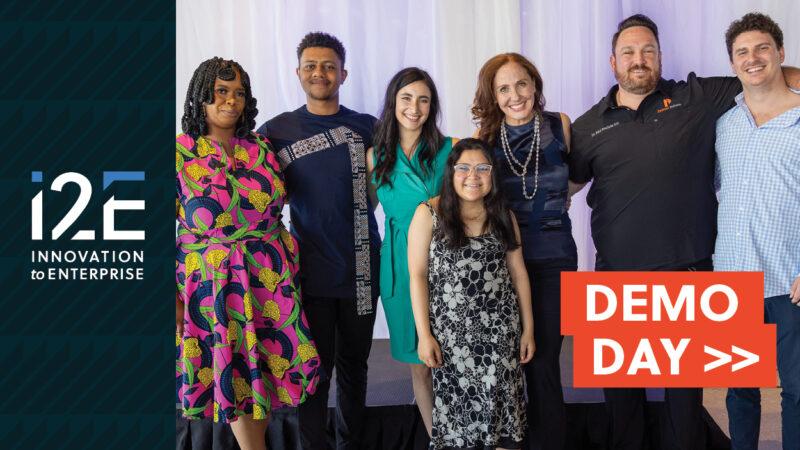Pictured in photo, from left, are Dr. BinBin Weng and Dr. Zhisheng Shi from the University of Oklahoma, and Dr. Elaine Hamm, i2E Venture Advisor and Director of the Oklahoma Proof of Concept Center.
By the time Stacey Brandhorst and Rachel Mui of PristineCal neared the conclusion of an upbeat presentation about their Oklahoma State University spin-out, I was prepared for an equally enthusiastic forecast for the company over the next few years.
Brandhorst and Mui were making a final presentation on Wednesday at the Oklahoma Medical Research Foundation’s Wileman Learning Center as one of three promising concepts evaluated in the inaugural class of the Oklahoma Proof of Concept Center.
I wasn’t prepared for their stunning conclusion.
What I got was a stop sign projected onto the screen behind them and an explanation from the pair on why they weren’t going forward with the company.
RIP PristineCal.
PrirstineCal was created to commercialize technology that removes heavy metals from calcium, eliminating health risks for people who take it as a dietary supplement or consume it in other foods.
In addition to PristineCal, teams evaluating two other concepts from the University of Oklahoma made final presentations to an audience of about 50 people.
Proof of Concept teams were composed of entrepreneurs, university researchers and business mentors who evaluated markets, talked to scores of potential customers, created minimally viable products and revised their business models multiple times along the way.
During this Proof of Concept Center process, teams gather unbiased data about the commercial potential for their technology from customers, industry experts, manufacturers and government regulatory agencies.
Unbiased is key to the process, Dr. Elaine Hamm, i2E Venture Advisor and Director of the Proof of Concept Center told me.
“Passion is something startups and scientists clearly have,” she said. “You couldn’t survive in either world without passion. However, in the business world and in the scientific world, passion should be tempered with evidence, feedback, and frank conversations. It is with this data, that a strong commercialization strategy and business foundation can be built.”
In the end, two of the three teams decided that the time wasn’t right to go forward with a company to commercialize the products. In addition to the “no” for PristineCal, the team from OU evaluating a technology that prevents interference for wireless medical devices decided to say “not yet.”
Only the Mid-Infrared Detectors Group from OU, which explored the business opportunities for sensor technology to detect dangerous gasses, fire, motion and other uses, decided to go forward with the concept with a solid “yes.”
But it’s all good, Dr. Hamm said.
“I don’t consider a startup a measurement for success,” she said. “From the beginning, the Proof of Concept Center set the expectation to the teams and the partners that the process may realize a new startup company, or a license agreement with an existing company. However, they may also discover a “no” or a “not yet” for the commercialization of that technology.”
In fact, that “no” may be just as valuable to the university and the technology inventor as plowing ahead with a company.
“It’s better to fail in week six than year six,” Dr. Hamm said. “Nos and not yets are valuable to a university because now they don’t have to sink a lot of money into patent costs and spinouts. Nos and not yets are valuable to the scientists as they now have industry validated data to form new hypotheses and they can go back to their lab, refine their work, and create new technologies.
“And the Nos in the startup world are the norm…a badge of honor. It is rare for a successful startup CEO to have not had several failed startup companies. Risk is the very nature of innovation and startups. We had an example of all three possible outcomes in our first class — a no, a not yet and a yes. To me, all are very valuable outcomes.”
Next time, I’ll be better prepared for surprising conclusions at the Proof of Concept final presentations.
Class 2 expects to launch in August. Stay tuned.








